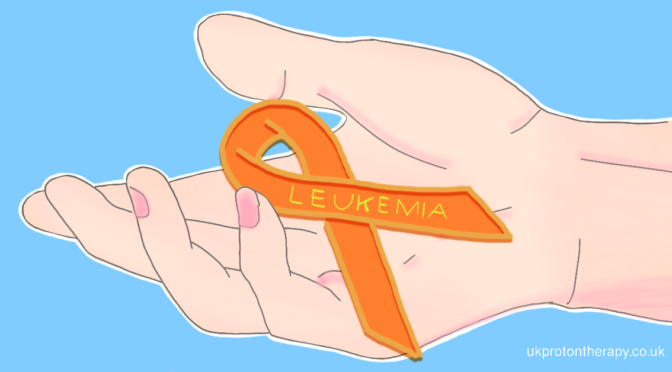A study published in August 2019 in the International Journal of Particle Therapy by Dr. Slater and his team, highlights the results of their latest phase I/II hypofractionated proton therapy study at Loma Linda University Hospital.
Prostate cancer is the most commonly diagnosed cancer in men, and many of these patients have low-risk, early disease. Prostate cancer at these stages remains highly treatable with local control rates over 90% and very low rates of late morbidity commonly reported for a variety of treatment modalities. The focus then turns to the avoidance of unnecessary negative treatment-related side effects that can occur, particularly through the use of conventional treatments such as surgery and x-ray (conventional) radiotherapy.
Proton radiation therapy has demonstrated itself to be an excellent option for low-risk prostate cancer as it delivers high control rates with very little toxicity. Proton beam thereby enhances the physician’s opportunity to minimise risks for the patient.
Hypofractionation is the process of delivering higher doses of radiation per fraction, but using fewer daily fractions. Doctors and physicists at Loma Linda University have successfully used hypofractionated proton therapy for several diseases, including cancers of the breast, lung, and liver. In each instance, control and survival rates have been maintained and unwelcome side effects have not increased. This experience prompted the medical team at Loma Linda to investigate hypofractionation for prostate cancer.
The purpose of the study was to determine whether a hypofractionated proton radiotherapy regimen can control early-stage prostate cancer while maintaining low rates of side effects similar to results obtained using standard-fraction proton radiotherapy.
A cohort of 146 patients with low-risk prostate cancer (Gleason score 7, prostate-specific antigen 10, tumor stage of T1–T2a) received 20 fractions of proton therapy (3.0 Gy per fraction over 4 weeks). Patients were evaluated at least weekly during treatment, at which time documentation of treatment tolerance and acute reactions was obtained. Follow-up visits were conducted every 3 months for the first 1 years, every 6 months for the next 3 years, then annually. Follow-up visits consisted of history and physical examination, PSA measurements, and evaluation of toxicity.
The 3-year biochemical progression-free survival rate was 99.3%, and the 5-year biochemical progression-free survival was 97.9%.
In conclusion, this study showed that hypofractionated proton therapy (60 Gy in 20 fractions) was safe and effective for patients with low-risk prostate cancer. A prospective multi-institutional randomised study is currently being conducted to confirm these results.
Sources:
Kil WJ, Nichols RC Jr, Hoppe BS, Morris CG, Marcus RB Jr, Mendenhall W, Mendenhall NP, Li Z, Costa JA, Williams CR, Henderson RH. Hypofractionated passively scattered proton radiotherapy for low- and intermediate-risk prostate cancer is not associated with post-treatment testosterone suppression. Acta Oncol. 2013;52:492–7
Mendenhall NP, Hoppe BS, Nichols RC, Mendenhall WM, Morris CG, Li Z, Su Z, Williams CR, Costa J, Henderson RH. Five-year outcomes from 3 prospective trials of image-guided proton therapy for prostate cancer. Int J Radiat Oncol Biol Phys. 2014;88:596–602
Mendenhall NP, Li Z, Hoppe BS, Marcus RB Jr, Mendenhall WM, Nichols RC, Morris CG, Williams CR, Costa J, Henderson R. Early outcomes from three prospective trials of image-guided proton therapy for prostate cancer. Int J Radiat Oncol Biol Phys. 2012;82:213–21
Shipley WU, Verhey LJ, Munzenrider JE, Suit HD, Urie MM, McManus PL, Young RH, Shipley JW, Zietman AL, Biggs PJ, Heney NM, Goitein M. Advanced prostate cancer: the results of a randomized comparative trial of high dose irradiation boosting with conformal protons compared with conventional dose irradiation using photons alone. Int J Radiat Oncol Biol Phys. 1995;32:3–12
Slater JD, Rossi CJ Jr, Yonemoto LT, Bush DA, Jabola BR, Levy RP, Grove RI, Preston W, Slater JM. Proton therapy for prostate cancer: the initial Loma Linda University experience. Int J Radiat Oncol Biol Phys. 2004;59:348–52
Slater JD, Rossi CJ Jr, Yonemoto LT, Reyes-Molyneux NJ, Bush DA, Antoine JE, Miller DW, Teichman SL, Slater JM. Conformal proton therapy for early-stage prostate cancer. Urology. 1999;53:978–84
Slater JD, Yonemoto LT, Rossi CJ Jr, Reyes-Molyneux NJ, Bush DA, Antoine JE, Loredo LN, Schulte RW, Teichman SL, Slater JM. Conformal proton therapy for prostate carcinoma. Int J Radiat Oncol Biol Phys. 1998;42:299–304
Slater JM, Slater JD, Kang JI, et al. Hypofractionated Proton Therapy in Early Prostate Cancer: Results of a Phase I/II Trial at Loma Linda University. Int J Part Ther. 2019;6(1):1–9. doi:10.14338/IJPT-19-00057
Zietman AL, Bae K, Slater JD, Shipley WU, Efstathiou JA, Coen JJ, Bush DA, Lunt M, Spiegel DY, Skowronski R, Jabola BR, Rossi CJ. Randomized trial comparing conventional-dose with high-dose conformal radiation therapy in early-stage adenocarcinoma of the prostate: long-term results from Proton Radiation Oncology Group/American College of Radiology 95-09. J Clin Oncol. 2010;28:1106–11



 Dr Kateřina Dědečková
Dr Kateřina Dědečková